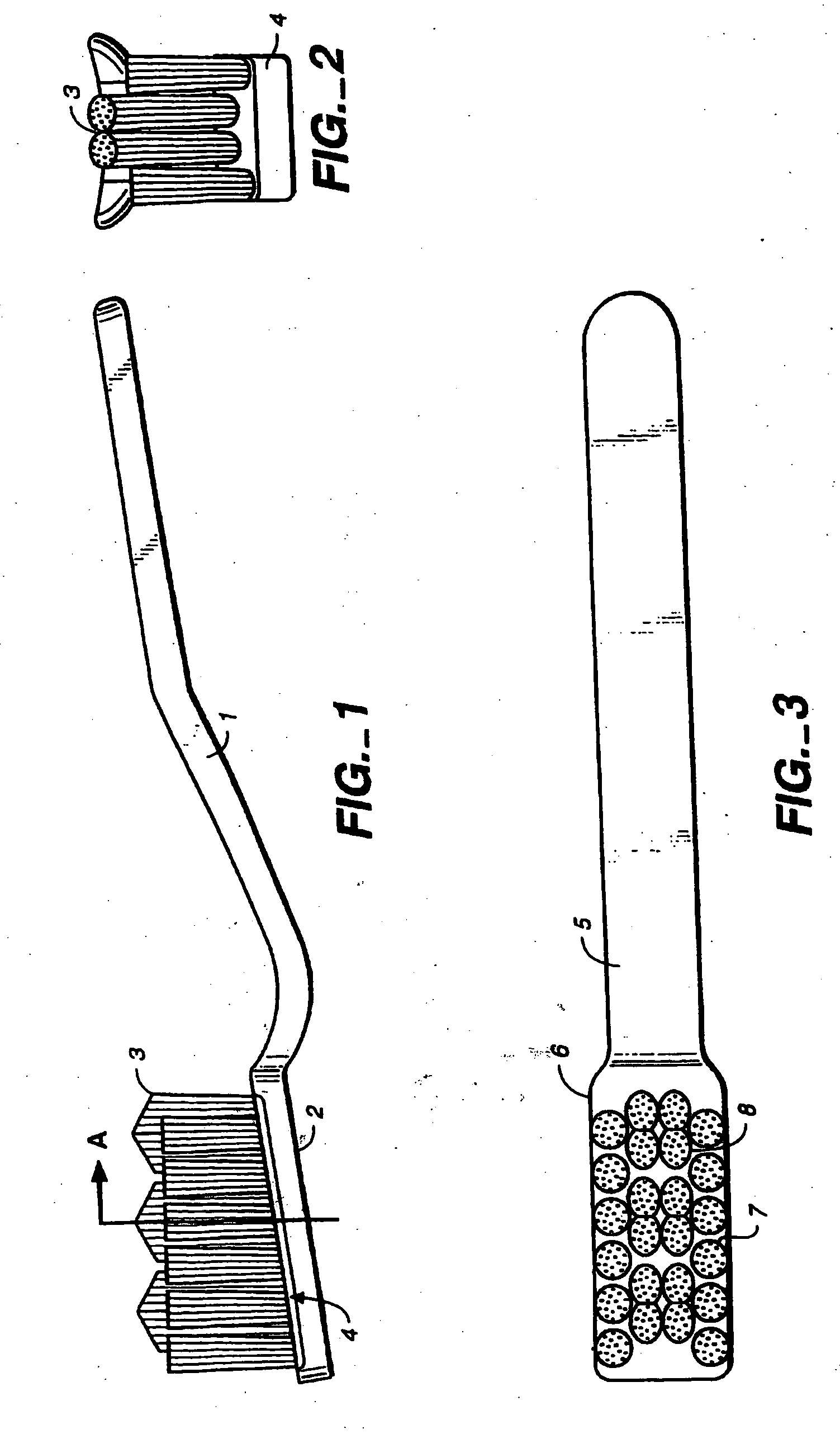Accelerated method and instrumentation for whitening teeth
a technology of teeth whitening and accelerated method, which is applied in the field of teeth whitening, can solve the problems of inability to remove extrinsic stains, inability to leave all internal pigmentation unchanged, and inability to achieve whitening effects that are extremely limited
- Summary
- Abstract
- Description
- Claims
- Application Information
AI Technical Summary
Benefits of technology
Problems solved by technology
Method used
Image
Examples
example 1
[0034] Stained extracted teeth were sectioned into two equal pieces. Each of the pieces was submerged into a peroxide solution or gel. One piece of each tooth was submerged in peroxide alone, while the other was submerged in hydrogen peroxide with a catalyst, a hydrogen peroxide containing a modifier to raise the pH (either AMP or tris-Amino), or hydrogen peroxide containing both the catalyst and the modifier. Three solutions were tested: (1) 3% hydrogen peroxide, (2) 6% hydrogen peroxide, and (3) 10% hydrogen peroxide. Two gels were tested: (1) a commercially available dentist-supervised bleaching gel containing hydrogen peroxide up to 7%, and (2) a commercially available dentist-supervised bleaching gel containing carbamide peroxide up to 20%. Two catalysts were used in the experiments, either a standard activated charcoal or Centaur (Calgon) activated charcoal. Samples were photographed after three minutes of exposure, and at several other time points.
[0035] When a catalyst was ...
example 2
[0036] A catalytic agent was applied to a toothbrush by dipping a wet toothbrush into powdered catalytic agent, or by bonding activated charcoal to a toothbrush head between the bristles. A whitening gel (Natural White) containing 1.5% hydrogen peroxide was applied to the toothbrush and the brush was used to clean a subject's teeth. A whitening effect was noted after one application of three minutes in duration. One subject repeated the application of the whitening gel in the presence of the catalytic agent twice a day for three days. Significant whitening was noted following three days of application.
example 3
[0037] Liquid 3% hydrogen peroxide was mixed with a few drops a mint flavor. A small amount of activated charcoal catalytic agent was placed into a cup, and one-half teaspoon of the peroxide was added. This solution was used to bathe the teeth of subjects for sessions of three minutes of duration, carried out for twice a day over a period of several days. Visible whitening was noted after two days.
[0038] It is to be understood that this invention is not limited to the particular methodology, and that protocols, apparatus, models and reagents described as such may, of course, vary. It is also to be understood that the terminology used herein is for the purpose of describing particular embodiments only, and is not intended to limit the scope of the present invention which will be limited only by the appended claims.
PUM
| Property | Measurement | Unit |
|---|---|---|
| thick | aaaaa | aaaaa |
| size | aaaaa | aaaaa |
| pH | aaaaa | aaaaa |
Abstract
Description
Claims
Application Information
 Login to View More
Login to View More - R&D
- Intellectual Property
- Life Sciences
- Materials
- Tech Scout
- Unparalleled Data Quality
- Higher Quality Content
- 60% Fewer Hallucinations
Browse by: Latest US Patents, China's latest patents, Technical Efficacy Thesaurus, Application Domain, Technology Topic, Popular Technical Reports.
© 2025 PatSnap. All rights reserved.Legal|Privacy policy|Modern Slavery Act Transparency Statement|Sitemap|About US| Contact US: help@patsnap.com

